Related Research Articles
The University of Texas Southwestern Medical Center is a public academic health science center in Dallas, Texas. With approximately 23,000 employees, more than 3,000 full-time faculty, and nearly 4 million outpatient visits per year, UT Southwestern is the largest medical school in the University of Texas System and the State of Texas.

Scintigraphy, also known as a gamma scan, is a diagnostic test in nuclear medicine, where radioisotopes attached to drugs that travel to a specific organ or tissue (radiopharmaceuticals) are taken internally and the emitted gamma radiation is captured by gamma cameras, which are external detectors that form two-dimensional images in a process similar to the capture of x-ray images. In contrast, SPECT and positron emission tomography (PET) form 3-dimensional images and are therefore classified as separate techniques from scintigraphy, although they also use gamma cameras to detect internal radiation. Scintigraphy is unlike a diagnostic X-ray where external radiation is passed through the body to form an image.

Neuroimaging is the use of quantitative (computational) techniques to study the structure and function of the central nervous system, developed as an objective way of scientifically studying the healthy human brain in a non-invasive manner. Increasingly it is also being used for quantitative research studies of brain disease and psychiatric illness. Neuroimaging is highly multidisciplinary involving neuroscience, computer science, psychology and statistics, and is not a medical specialty. Neuroimaging is sometimes confused with neuroradiology.
William Henry Oldendorf was an American neurologist, physician, researcher, medical pioneer, founding member of the American Society for Neuroimaging (ASN), and originator of the technique of computed tomography.
Louise McCullough is an American neurologsit who is the Prof. Roy M. & Phyllis Gough Huffington Distinguished Chair of Neurology and is actively engaged in stroke research at the University of Texas Health Science Center in Houston, Texas. She provides neurological care at Memorial Hermann Hospital, which has a state-of-the-art stroke center and is co-director of the Mischer Neuroscience Institute.
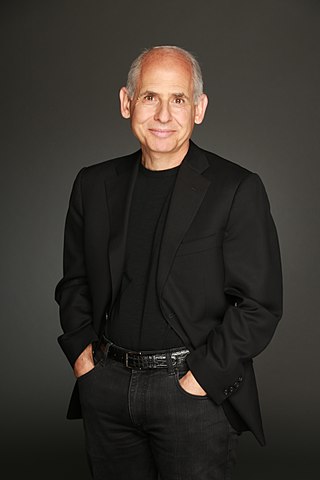
Daniel Gregory Amen is an American celebrity doctor who practices as a psychiatrist and brain disorder specialist. He is the founder and chief executive officer (CEO) of the Amen Clinics. He is also the founder of Change Your Brain Foundation, BrainMD, and Amen University. Discover Magazine recognized Amen's research on PTSD and Traumatic Brain Injury (TBI) as one of the top 100 science stories of 2015. He is a twelve-time New York Times best-selling author as of 2023.
Bruce C. Kone is an American professor, nephrologist and molecular biologist. He is also a World Aquatics Masters Swimming world record holder, United States Masters Swimming (USMS) national record holder, twenty-three-time USMS national champion, and eight-time FINA Masters world's top-ranked age group swimmer. He is currently a tenured professor of medicine at the University of Texas Health Science Center at Houston (UTHealth).
Perfusion is the passage of fluid through the lymphatic system or blood vessels to an organ or a tissue. The practice of perfusion scanning is the process by which this perfusion can be observed, recorded and quantified. The term perfusion scanning encompasses a wide range of medical imaging modalities.
In pathology and anatomy the penumbra is the area surrounding an ischemic event such as thrombotic or embolic stroke. Immediately following the event, blood flow and therefore oxygen transport is reduced locally, leading to hypoxia of the cells near the location of the original insult. This can lead to hypoxic cell death (infarction) and amplify the original damage from the ischemia; however, the penumbra area may remain viable for several hours after an ischemic event due to the collateral arteries that supply the penumbral zone.
John Quinn Trojanowski was an American academic research neuroscientist specializing in neurodegeneration. He and his partner, Virginia Man-Yee Lee, MBA, Ph.D., are noted for identifying the roles of three proteins in neurodegenerative diseases: tau in Alzheimer's disease, alpha-synuclein in Parkinson's disease, and TDP-43 in Amyotrophic Lateral Sclerosis (ALS) and frontotemporal degeneration.
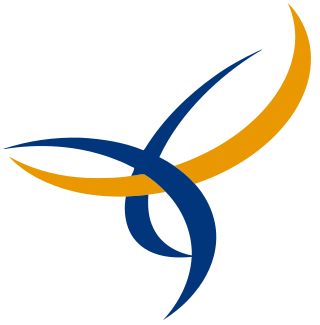
The National Core for Neuroethics at the University of British Columbia was established in August 2007, with support from the Canadian Institutes of Health Research, the Institute of Mental Health and Addiction, the Canada Foundation for Innovation, the British Columbia Knowledge Development Fund, the Canada Research Chairs program, the UBC Brain Research Centre and the UBC Institute of Mental Health. Co-founded by Judy Illes and Peter Reiner, the Core studies neuroethics, with particular focus on ethics in neurodegenerative disease and regenerative medicine, international and cross-cultural challenges in brain research, neuroimaging and ethics, the neuroethics of enhancement, and personalized medicine.
Burton Drayer, MD, FACR, FANN, is an American radiologist and nationally recognized authority on the use of computed tomography and magnetic resonance imaging for diagnosing neurological disorders. From 2003 to 2008, he served as president, The Mount Sinai Hospital. As of 2020, he is the Charles M. and Marilyn Newman Professor and System Chair, Radiology, for The Mount Sinai Health System and Icahn School of Medicine at Mount Sinai Hospital in New York City.
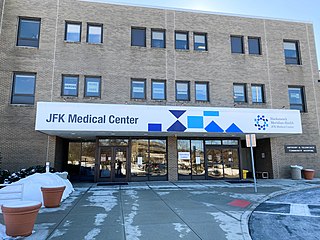
John F. Kennedy University Medical Center (JFKMC), an affiliate of Hackensack Meridian Health (HMH), is a 499-bed full-service, acute care hospital, and the home of the JFK Johnson Rehabilitative Institute. It is affiliated with Hackensack Meridian School of Medicine and Robert Wood Johnson Medical School, and is located in Edison, New Jersey. In 2021 it announced an affiliation with the St. Joseph's Wayne Medical Center, also in New Jersey.

The Center for BrainHealth, part of The University of Texas at Dallas' school of Behavioral and Brain Sciences, is a research institute focused exclusively on brain health that combines brain research with clinical interventions. Founded by Dr. Sandra Bond Chapman in 1999, the Center for BrainHealth houses 125 researchers, postdoctoral research fellows, doctoral students, master's students, and research clinicians who work on 60 privately and federally funded research projects. The Center provides academic training and houses specialists in, among many others, Alzheimer's disease, traumatic brain injury (TBI), healthy brain aging, multiple sclerosis, autism, attention deficit hyperactivity disorder (ADHD), stroke, and posttraumatic stress disorder (PTSD). To help raise awareness of and funding for research underway at the Center for BrainHealth, a number of proponent groups have formed. These include the Think Ahead Group (TAG) of young professionals and Friends of BrainHealth.
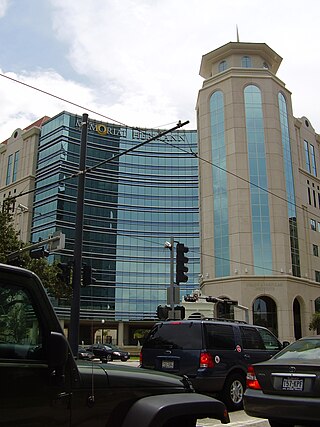
Memorial Hermann–Texas Medical Center is a nationally ranked hospital at the Texas Medical Center. It is the first hospital founded in the Texas Medical Center in Houston, Texas. Founded in 1925, it is the primary teaching hospital for McGovern Medical School and the flagship location of 13 hospitals in the Memorial Hermann Healthcare System. It is one of two certified Level I Trauma Centers in the greater Houston area. The Memorial Hermann Life Flight air ambulance service operates its fleet of helicopters from Memorial Hermann–Texas Medical Center. Pediatric care to the hospital is provided by Children's Memorial Hermann Hospital which treats infants, children, teens, and young adults age 0-21.

Val Murray Runge is an American and Swiss professor of radiology and the editor-in-chief of Investigative Radiology. Runge was one of the early researchers to investigate the use of gadolinium-based contrast agents for magnetic resonance imaging (MRI), giving the first presentation in this field, followed two years later by the first presentation of efficacy. His research also pioneered many early innovations in MRI, including the use of tilted planes and respiratory gating. His publication on multiple sclerosis in 1984 represented the third and largest clinical series investigating the role of MRI in this disease, and the first to show characteristic abnormalities on MRI in patients whose CT was negative.
Camilo Ramiro Gomez, is an American neurologist, medical educator, and researcher. He is one of the first 100 vascular neurologists certified by the American Board of Psychiatry and Neurology (ABPN), and one of the founders of the subspecialty of interventional neurology in the United States.
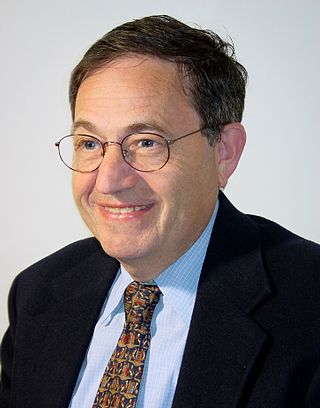
Ferenc Andras Jolesz was a Hungarian-American physician and scientist best known for his research on image guided therapy, the process by which information derived from diagnostic imaging is used to improve the localization and targeting of diseased tissue to monitor and control treatment during surgical and interventional procedures. He pioneered the field of Magnetic Resonance Imaging-guided interventions and introduced of a variety of new medical procedures based on novel combinations of imaging and therapy delivery.

Jonathan S. Lewin is an American neuroradiologist specializing in medical imaging research with an emphasis on the investigation, development, and translation of new magnetic resonance imaging (MRI) techniques. He is the former executive vice president for health affairs (EVPHA) and executive director of the Woodruff Health Sciences Center for Emory University, and former President, CEO, and chairman of the board of Emory Healthcare. He currently serves as professor of radiology, biomedical engineering, and neurosurgery in the Emory School of Medicine and as professor of health policy and management in the Rollins School of Public Health.
Luca Saba is an Italian radiologist and neuroradiologist. He has made contributions in the field of imaging for the detection and characterization of vulnerable plaque and the identification of the causes of stroke. He is also the author of both American. and European consensus documents on this matter.
References
- ↑ Laino, Charlene. "'Chemo Brain' Real, Not Just Patient's Imagination" Archived 2014-08-11 at archive.today . WebMD Medical News. 29 November 2012.
- ↑ Lowry, Fran. "Brain Biomarker Predicts Better Functioning After Mild TBI". Medscape Medical News November 26, 2012.
- ↑ "Back-up circulation kicks in after stroke" Archived 2014-08-11 at archive.today UCLA Stroke Center